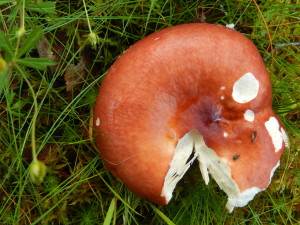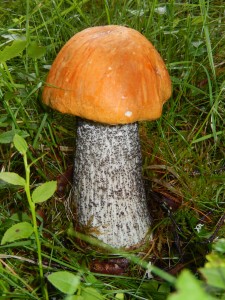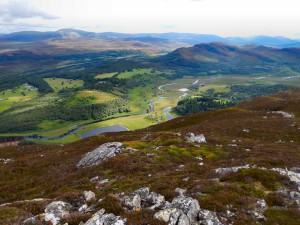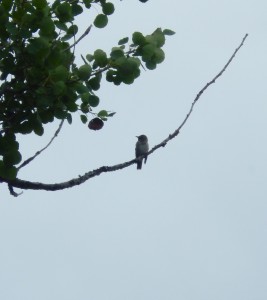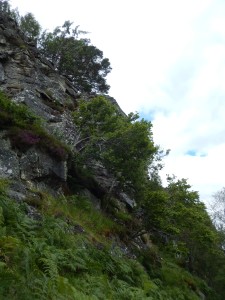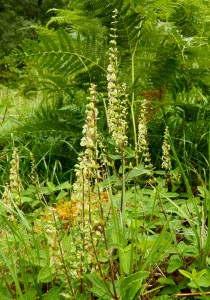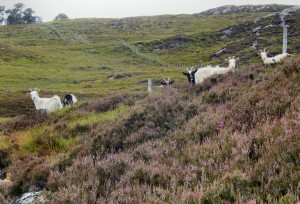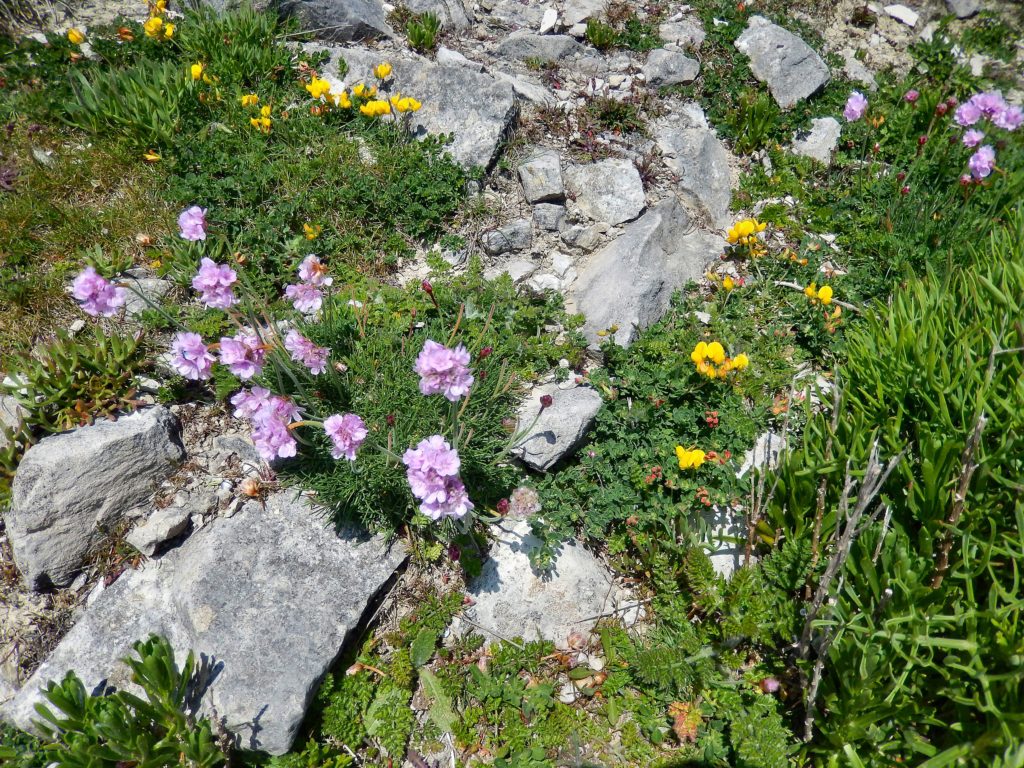
We had a fine airy walk in brilliant sunshine, cooled by a stiff northerly breeze, around the tip of the Isle of Portland. Underfoot was fine maritime turf and massive Portland limestone, dotted with tufts of pink Thrift and yellow Birdsfoot Trefoil. The sea sparkled blue and silver around a wooden sailing ship with four triangular sails. A pair of Gannets flew effortlessly down the wind, tilting their long black-tipped wings.
To the south, the fearsome tide-race splashed ominously as if some Odyssean sea-monster (Charybdis and its whirlpool?) lurked beneath: the tide there runs faster than a yacht can sail, one way and then the other. Jonathan Raban describes it wonderfully in his book Coasting, the feeling of rising alarm and then, going for it, being shot like a cork from a champagne bottle through the swirling water.
A Rock Pipit, its beak full of insect grubs, called urgently as we strayed too close to its nest. A Razorbill, improbably proportioned like a fat impresario in black tie and tails, flapped by on small rapid triangular wings.
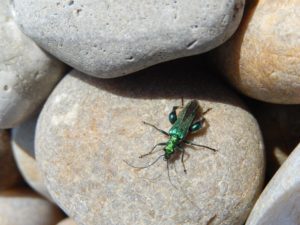
We saw few insects – some bumble bees, some handsome Thick-kneed Flower Beetles glowing iridescent green on buttercups, later on one male perched on a pebble on Chesil Beach
.
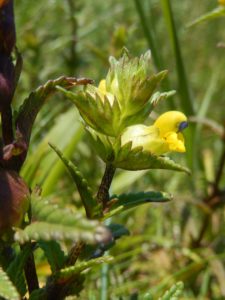
The best flower of the day was probably the Yellow Rattle, an odd-shaped parrot-beaked yellow flower with spiky leaves. It’s a member of the Figwort family (like the Eyebright, whose growth habit is similar though smaller), and a hemiparasite of grasses: an important plant, as it weakens the grasses, keeping them low and allowing in a wealth of other flowers. It was once common in our meadows and permanent pastures, but fertilizers and ploughing have destroyed over 95% of these, and Yellow Rattle and the rest of our grassland flowers are now all desperately uncommon.
Overhead, two Peregrine Falcons slid through the air, circling without visible effort. A pair of Ravens came by. Standing at the top of the western cliffs, Fulmars flew out from their cliff nests, circling on stiff wings.
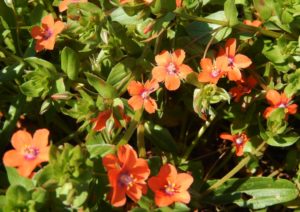
A little patch of Scarlet Pimpernel by a gate again reminded me of how this once common weed of cultivation (and sand dunes – presumably it was pre-adapted to disturbed ground) has declined.
We left Portland and drove down the hill to the Chesil Beach, struck as everyone is by the enormous shingle bar that stretches miles from Abbotsbury to the Isle of Portland, forming a bar with the Fleet lagoon behind it.
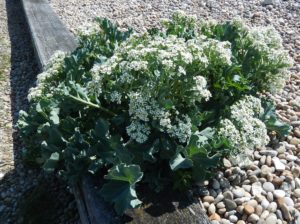
A few handsome Sea Kale plants clung to the lower part of the landward side of the shingle, including this one on the edge of the car park. It is the ancestor of the domestic cabbage in all its varieties, from Broccoli to Brussels Sprouts, Kale to Cauliflower. It is itself (obviously) edible, though as a now-scarce maritime plant one wouldn’t want to pick any of it at all often.
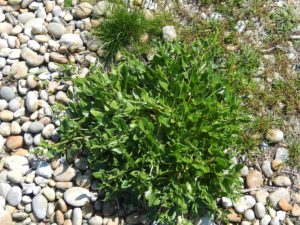
Nearby, the ancestor of another valuable food plant, the Sea Beet, origin of Sugar Beet, purple Beetroot, and Spinach Beet. The wild plant too is edible, though the leaves are small, thick, and leathery!

